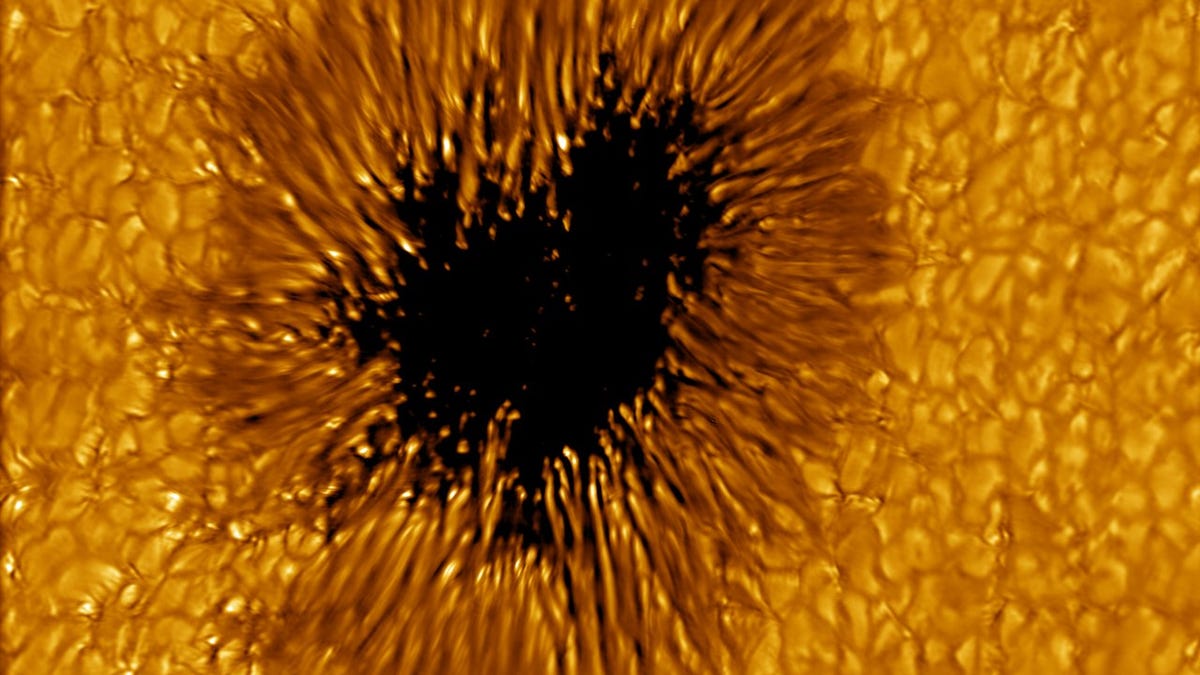Sunspot Looks Like a Gaping, Toothy Maw in Wild Solar Telescope Image
The Inouye Solar Telescope delivers a strikingly detailed view of our neighborhood star.
We're getting to know our sun like never before thanks to space missions like NASA's Parker Solar Probe and ESA and NASA's Solar Orbiter. The next-gen Inouye Solar Telescope in Hawaii is showing you don't have to be in space to conduct groundbreaking solar science. Inouye delivered a stunner of a sunspot view that highlights the new telescope's power.
This week, the National Solar Observatory tweeted the Inouye image. The release coincided with a close approach to the sun by Parker, which is famously reaching out to "touch" our solar buddy.
Thanks to powerful technology and sophisticated processing @NSF’s Inouye Solar Telescope has given the world a striking new sunspot image. With details as small as 20km across, the Inouye had its eyes on the #Sun as @NASASun PSP approached the corona #NSFFunded #ParkerPerihelion pic.twitter.com/AVI04zu5WK
— NatlSolarObservatory (@NatSolarObs) February 28, 2022
"The diameter of the dark part of the sunspot (called the umbra) is about the same diameter of Earth," NSO added. It can be hard to get a sense of scale when you see a sun view that's cropped and up close, but you can imagine popping our entire planet into what looks like a gaping, toothy maw.
The US National Science Foundation-funded Inouye Solar Telescope officially kicked off its first science observations in February. It's the start of a year-long commissioning phase and what NSO called a "new era of solar science" in a statement last week.
Inouye, the world's largest solar telescope, is set to deliver high-resolution sun observations with a level of detail never seen before. It will help researchers study and predict solar events that can have impacts back on Earth.
The sun has been ramping up its activity lately. NASA and ESA's Solar Orbiter mission got a good look at a recent, epic eruption. Inouye has come online at a perfect time to document an uptick in outbursts, sunspots and space weather. We can look forward to more knockout images of our moody star.


